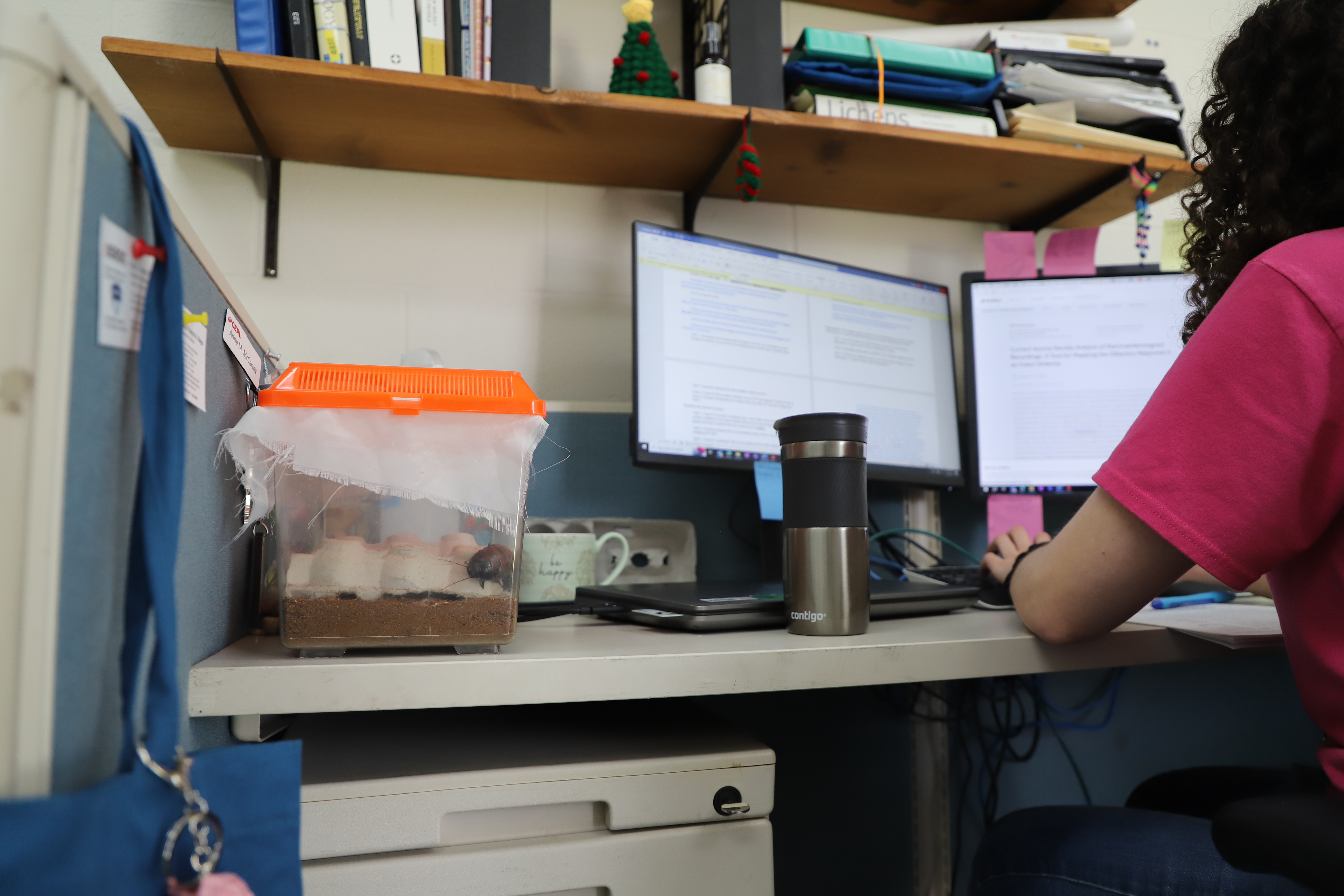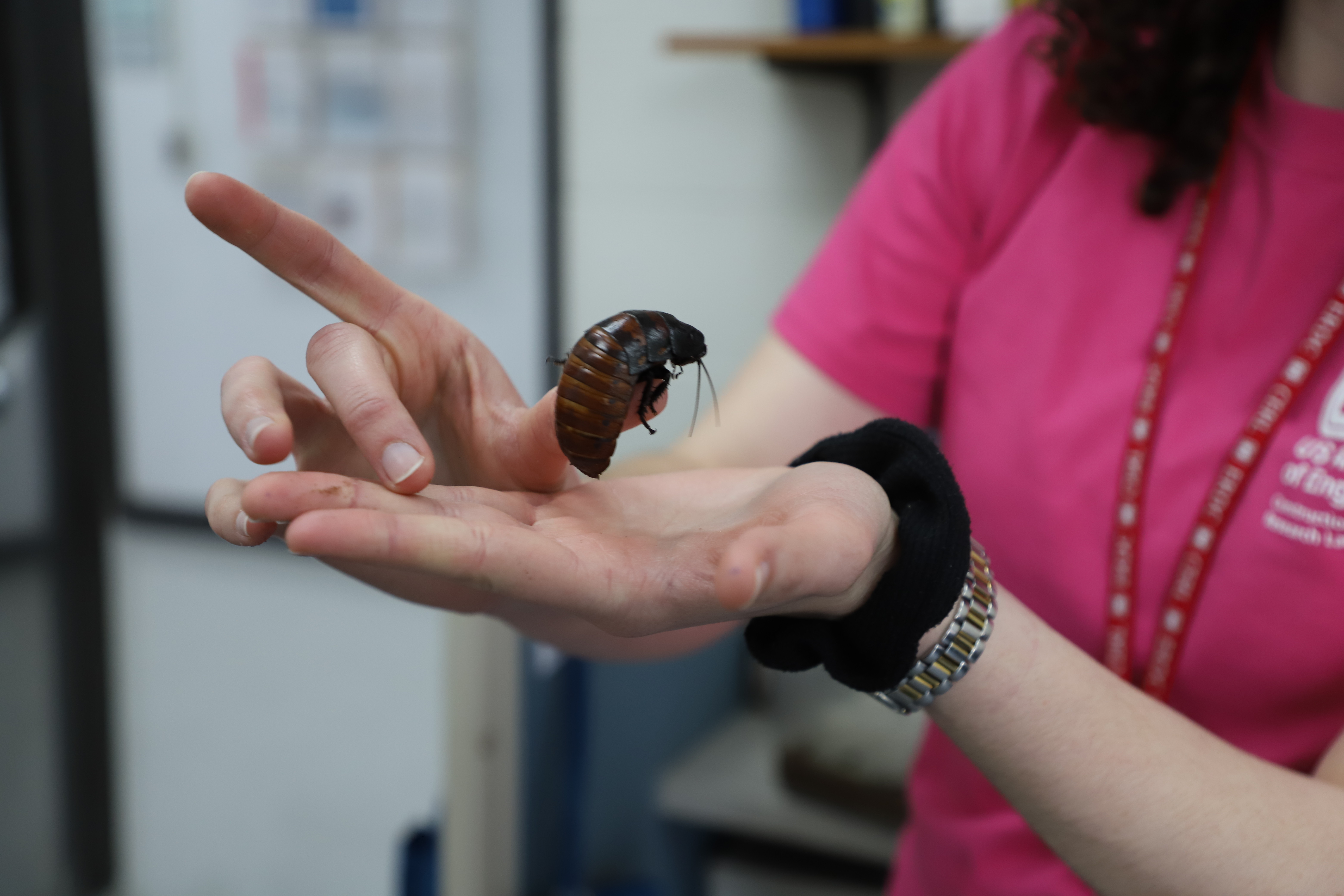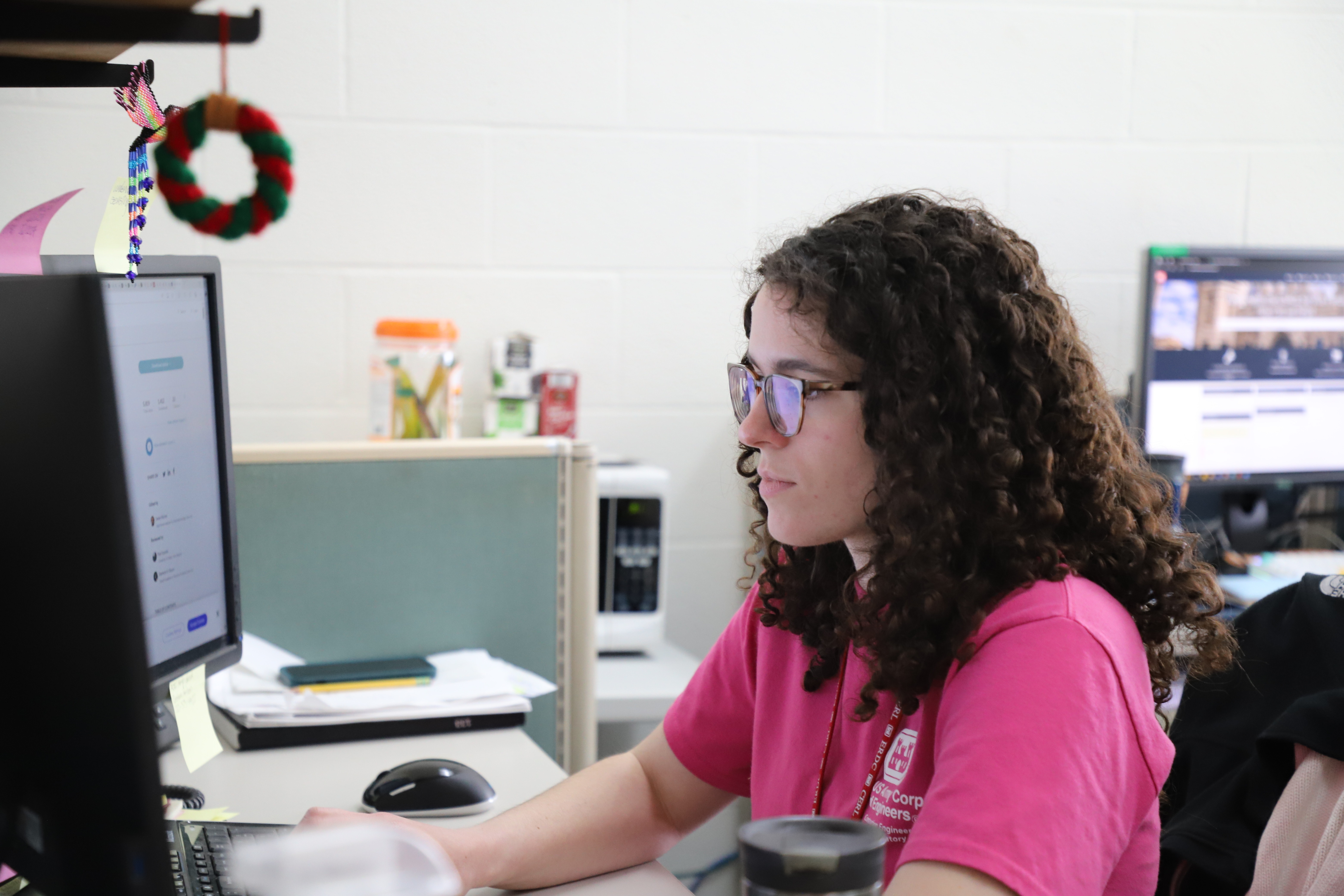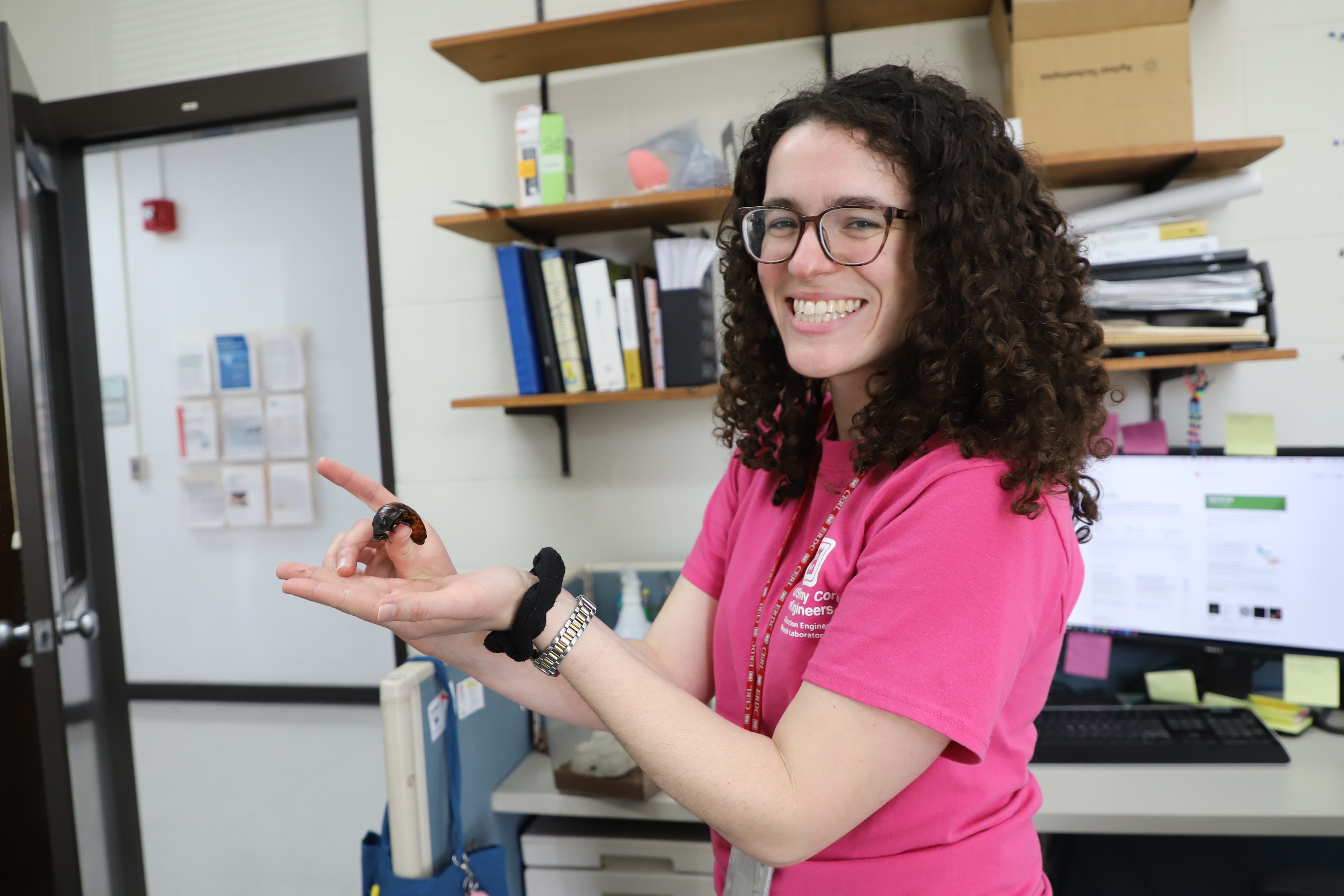CHAMPAIGN, Il. — At the U.S Army Engineer Research and Development Center (ERDC), researcher Anne McCarthy sits in an office next to Harry, William and Diana. They are helpful office mates, offering her technical assistance when she needs it. They don't bug her too much, but they do offer the occasional hiss. In fact, they're the main stars of her current project — Harry, William and Diana are Madagascar hissing cockroaches.

ERDC's Construction Engineering Research Laboratory (CERL) is known to discover, develop, deliver and sustain trusted engineering and scientific solutions impacting built and natural infrastructure for the Warfighter and the Nation. McCarthy takes that mission seriously, so she's called in the cockroaches for her project "Insect antennae for odorant-driven real-time decision processing," which basically means their antennae will help identify and sense chemicals in an area.
McCarthy is on CERL's Chemical/Synthetic Biology team in the Materials and Structures branch. Her team studies natural processes and attempts to recreate them for special purposes. Madagascar hissing cockroaches are native to the island of Madagascar, but in Champaign, their natural sniffing processes are helping McCarthy identify different volatiles, or chemicals that easily evaporate.
"Insects are really good at smelling and tasting their environment, largely because of their antennae," McCarthy said. "They have these proteins in their antennae called odorant receptors that bind to odorants and then, just like how we smell through receptors that bind to odors, a signal gets sent to their brain to tell them what it is."

Using this knowledge, McCarthy is attaching electrodes to the cockroach's antennae so she can visualize and measure that signal. She wants to learn if insect antennae can be used to sense Army relevant chemicals that can affect a Soldier and the land they encounter.
"We want to help protect the Warfighter, and we want to help protect the land and manage the land," she said. "And I think for both of those, it's very important to have the ability to sense the environment."
McCarthy, a research microbiologist, has been at ERDC-CERL for two and a half years. She is the Principal Investigator on the project, working alongside Donald Cropek, Morgan Conrady and Aron Katz. The project is a one-year Seed project, funded under the FLEX-4 program in basic and applied research, for ERDC researchers who have worked at the organization for less than 5 years.

The CERL team, and Harry, William and Diana, are reaching milestones for the lab's scope of work. "The technique to measure the signal is called Electroantennography, and it's not something that's been done here at CERL," she shared.

Right now, McCarthy is only using cockroaches, but she's also interested in looking at insects that fly and insects that are more diurnal versus nocturnal in behavior. She says measuring different insects may yield stronger responses to different volatiles.
"The reason for exposing different insects to many volatiles and recording the signals is to see if the signals look different enough that those differences can be exploited and used in a decision-making matrix for environmental sensor applications." McCarthy said.
Looking into the future, this research could be the backbone to building a sensor with odorant receptors that have the strongest responses to odorants the team is interested in detecting. The differences in these signals could be used to determine what odorant is in the area.

"I'm about halfway through this one-year project," McCarthy said. "I've been working on building my measurement setup, being trained by some collaborators and starting to get and raise insects."
McCarthy says this project is on the more basic side of research, but they are working towards application efforts as well.
"We're not at the point of making sensors, but that is the idea down the line," she said.
“The work Anne is doing is a direct result of the investment ERDC has made in new employees and developing them into the next generation of senior scientists and engineers,” Danielle Williams, chief of the Materials and Structures Branch at CERL, said. “She has been able to take advantage of the opportunity and is pushing the art of the science for sensing relevant odors from the environment.”

McCarthy wakes up every day excited to work at CERL, not just to see her hissing friends, but because of the collaboration opportunities that make innovative projects like this one possible.
"I'm on a team with biologists and chemists and engineers, and that's just my most immediate team of 12," she said. "And, when you go out another level and into our branch, there's just so much opportunity to collaborate with people who have a totally different background and expertise from you."
McCarthy shares that working in environments like the ones at ERDC-CERL foster the space to play with limitless and innovative ideas – even if that idea requires hissing cockroaches with powerful antennae.